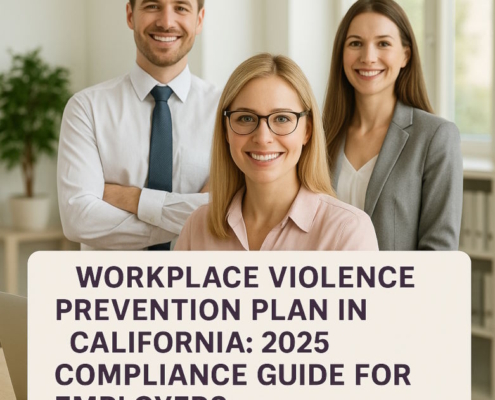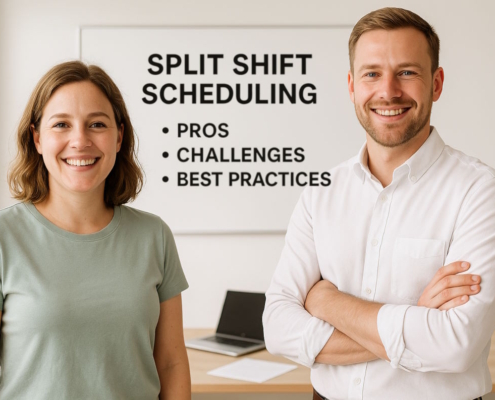What are employee skills?
Employee skills are one of the key components of an organization’s success. Developing your employees’ skills is essential to provide them the tools they need to work at their best both now and in the years to come. Filling in talent gaps is essential if you want to develop your company and thrive as a business. Let’s take a closer look at skill development, its advantages, and skill-building exercises.
The talents and abilities that employees need to perform their jobs well are known as skills. Through practice and education, people gain new abilities. Levels of proficiency—beginner, intermediate, advanced, and expert—can be used to quantify skills.
What does skill development involve?
The process by which a company assists its staff in developing the skills necessary to meet its strategic goals and obtain a competitive edge is known as skill building. This is achieved by using skill-building exercises designed to assist staff members with improving particular abilities.
The first steps in the skill-building process involve determining and recording the organization’s core competencies—knowledge, skills, abilities, and behaviors—as well as identifying any skills shortages and devising a plan for filling them.
An organizational, learning and development, and retention strategy is the internal development of abilities that support employees’ career advancement.
Building essential skills and competences for the company is a top focus for 59% of HR leaders, according to Gartner. Furthermore, according to 40% of HR leaders, they are unable to develop skill development solutions quickly enough to address changing skill needs.
Why is developing one’s skills important?
Employees and the company benefit from skill development in the following ways:
- Raising worker and organizational performance: Acquiring new competencies makes workers more effective, efficient, and financially valuable.
- Assisting workers and establishments in getting ready for the future: The goal of skill development is to cultivate the short- and long-term competencies that the business requires in order to achieve its goals.
- Engaging and keeping employees: Employees are more likely to be engaged and remain longer when an employer makes investments in their professional development. In fact, if a company invested in their learning and development, 94% of workers said they would stay longer.
Finding skills gaps
Organizations must evaluate employees’ present skill sets before attempting to address skills gaps. They can then decide which are the most effective ways to develop the abilities. There exist multiple methods that businesses can employ to pinpoint skills gaps:
- Analysis of Training Needs (TNA)
The process through which a company determines each employee’s needs for learning and development at every level in order to enable them to perform their jobs well is known as TNA.
- Performance evaluations
Key information about an employee’s strengths and shortcomings is provided by performance reviews. They highlight poor or inadequate talents. The company can then take these into consideration when developing goals and choosing appropriate skill-building exercises.
- Skill will matrix
Managers will become aware of the team’s strengths and shortcomings as they work with their staff. Managers may utilize a skill will matrix when goals are not reached or targets are not met because of a lack of abilities.
It’s a tool that assesses an employee’s willingness to work hard and their level of ability at completing a task. There are four quadrants created when this is plotted along the skill and will axes. Every quadrant outlines the appropriate way for the manager to interact with or oversee the workers who fit into that particular quadrant.
Managers can identify effective performance management and learning tactics for employees in each quadrant of the matrix by using the Skill Will Matrix. Supervisors ought to concentrate on developing the abilities of workers in the “low skill”/”high will” quadrant.
- Requests from employees
Workers may become aware of their own shortcomings and ask for chances to grow in order to improve their performance on the job and progress within the company.
The manager and the HR/Learning & Development Team have the responsibility of evaluating these requests to determine if they are reasonable, important, and a fit for the team and the company. If so, the company needs to make the necessary investments to acquire the needed abilities.
- Market shifts
Often, shifting markets and industries call for shifting skill sets. Certain skills age and must be replaced with new ones. The pandemic caused a major change in the value of certain abilities in the workplace and the importance of others.
Any talent that was needed or elevated from direct contact was reduced or rendered useless during the pandemic, according to a poll done by Newsweek. Informal or formal, virtual conversations are not the same as in-person encounters. Some claimed that their knowledge of risk assessment and mitigation, as well as time management, was out of date. Some claimed the rapid advancement of technological solutions allowing remote work rendered their technological expertise obsolete.
- New skilling
This change has given rise to a new approach to staff development called “new skilling,” which lessens the need to use expensive, haphazard methods to meet urgent skill gaps.
The Human Capital Institute and The Cornerstone People Research Lab investigated the strategies used by high-performing organizations (HPOs) to successfully manage the shifting demands of both the company and its workforce. The following six actions can be taken to construct a new skill-based approach to learning and development:
- Recognize the skills that will be needed both now and in the future.
- Recognize skill adjacencies and anticipate skill gaps.
- Focus instruction on roles as well as people.
- Make growth and learning a collaborative endeavor.
- Expand the range of learning methods
- Utilize learning technologies to identify requirements, track advancement, and evaluate results.
Activities to Develop Skills
You can incorporate a variety of skill-building exercises into your learning and development plan. The tasks can be tailored to teams, individuals, and different work levels. Use a variety of teaching strategies while developing skills within your company to give your staff members access to a rich learning environment.
Here are a few illustrations of skill-building exercises:
- Customer assistance
Each of the following customer service skill-building exercises suggested by TalentLMS may be useful for workers in the service sector who engage with customers frequently in order to help them be successful in their current position.
- Daily problem scenarios: They help staff members handle issues and make wise judgments in a timely and efficient manner.
- Simulations for communication skills: This kind of training improves employees’ written and spoken communication skills while reinforcing their comprehension of and ability to read body language.
- Serious games that solve problems: They teach and hone staff members’ comprehension of increasingly complicated challenges and their capacity to identify workable solutions.
- Narratives of customer profiles: Through understanding the psychology and behaviors of various customer types, personnel are better able to customize their reactions to various clients and consumers.
- Product expertise online training courses: Employees need to know a product inside and out in order to market it. These courses give staff members comprehensive product knowledge so they can sell and market a particular product while also handling any problems.
- Case Studies to Expect the Unexpected: The incorporation of case studies offers authentic instances of those uncommon and infrequent circumstances that have the power harm an organization’s reputation and brand. They give workers knowledge about these possible situations so they are ready to deal with any issue that arises.
- Test of stress: This skill-building exercise uses an online training simulation, branching situation, or what-would-you-do evaluation to see how staff members respond to scenarios including disgruntled customers, product malfunctions, and other difficulties.
- Leadership & Management
The skill-building exercises listed below are very beneficial for managers and other leaders.
- Supplementary guidance for leadership: Through this kind of mentoring, leaders who possess the qualities that potential leaders need are paired with those who do not.
- Executive mentorship: An inquiry-based strategy for professional and personal development with the goals of raising awareness, spurring action, and promoting growth. Its main objective is to enhance performance by assisting leaders in forming and maintaining fresh viewpoints, attitudes, abilities, and behaviors.
- Shadowing a job: This gives the worker a genuine perspective on how a workday operates, the chance to interact with important stakeholders, and a realistic grasp of the difficulties encountered at work.
- Work shifts: The worker takes on new responsibilities for three to six months before switching to a different role.
- Courses for professional development: These are often two to three days of off-site instruction for a certain ability or talent.
- Certifications for professionals: To perform in specialized tasks, employees might need to get and maintain professional credentials. A qualification in Strategic HR Leadership, for instance, might be beneficial for a future HR leader.
- Microlearning at your own speed: Comparable to Google Grow, LinkedIn Learning, and learning that is accessible on demand via Learning Management Systems.
Advice for your organization’s successful skill-building
- Create, manage, and upgrade an organizational competency model. Although creating a competency model is a laborious process, it is essential for determining skill gaps and fostering skill development. From the start of the job life cycle to the finish, it’s an investment that pays off.
- Think on both your immediate and long-term skill demands. Think about the requirements your company will have in six months and three to five years. This requires you to know where your company is going and to be able to predict future skill requirements based on shifts in the market.
- Analyze your skills gaps. The basis for determining and assessing skill gaps should be a competency model. It will let you recognize your weaknesses more clearly. After that, you can create efficient skill-building exercises to fill up the gaps. Identify your employees’ talent adjacencies; this is where skill development will be most straightforward.
- Employ a variety of learning methods. In line with the previously discussed skill-building exercises, companies ought to provide a diverse range of educational opportunities and approaches to close the skills gaps in their workforce. These consist of, for instance, online and classroom instruction, synchronous and asynchronous instruction, and formal and informal learning. In this manner, you may ensure that you are accommodating various learning styles.
- Use and promote non-formal education strategies: Lunch and learn events, peer-to-peer book exchanges, podcasts, and content sharing on internal communication channels are a few examples of these teaching strategies. These are effective strategies for motivating staff members to learn. Additionally, these occasions foster community and promote discussions on topics of interest.
- Pay attention to cognitive and soft skills: Employers are increasingly looking for workers with technical expertise. But these aren’t the only highly desirable abilities. McKinsey & Co. claims that because of the constant state of change, firms are putting more of an emphasis on the cognitive, emotional, and social abilities of employees. These include abilities in problem-solving, leadership & management, emotional intelligence, cultural intelligence, and project management.
- Apply targeted instruction: Training that is specifically designed to fill up certain skill gaps inside the company is known as targeted training. Additionally, you’re boosting your ability to retain employees, improving your competitiveness, and making sure that your resources are being used efficiently.
- Monitor the outcomes of your work: After starting a skill-building exercise with a particular team, you ought to monitor the improvements in performance that the team members have made. It is possible to assess the immediate, short-term, and long-term effects on reaching both personal and group objectives. For assessing the success of your skill-building initiatives, think about utilizing Kirkpatrick’s Four-level Training Evaluation Model.
In conclusion
If you want to guarantee the long-term success of your company, skill development has to be a key component of your learning and development plan. Organizations must create and sustain flexible plans for skill development and building in order to stay competitive and retain valuable personnel given the speed at which change is occurring.
To remain competitive, cognitive, emotional, and social abilities are given more importance. Organizations may create a knowledgeable, motivated workforce that will support business expansion by implementing a learning and retention strategy that addresses each of these factors.































